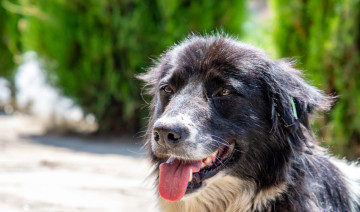
How to Tell If Your Pet is Overheating
As temperatures rise during the summer months, it’s important to keep a close eye on your furry friends. Dogs and cats are more susceptible to heat-related issues than humans, and overheating can lead to serious health problems if not addressed quickly. Knowing the signs of overheating and how to respond can help you keep your pet safe and comfortable.
Signs Your Pet May Be Overheating
- Excessive Panting
Panting is a normal cooling mechanism for pets, especially dogs. However, if your pet is panting heavily or more rapidly than usual, it may be a sign they’re struggling to regulate their body temperature. - Drooling or Thick Saliva
An increase in drooling or sticky, thick saliva can be an indicator that your pet is overheating. - Lethargy or Weakness
If your pet seems unusually tired, sluggish, or is having trouble standing or walking, it could be due to heat exhaustion. - Bright Red or Pale Gums
Changes in gum color, especially bright red or pale/white gums, can signal heat stress and reduced blood circulation. - Vomiting or Diarrhea
Heatstroke can affect your pet’s digestive system, causing nausea, vomiting, or diarrhea. - Rapid Heartbeat
An increased heart rate is another sign your pet may be overheating. You may notice your pet’s chest moving faster than usual. - Disorientation or Collapse
In severe cases, an overheated pet may stumble, become confused, or even collapse. This is a medical emergency and requires immediate veterinary care.
What to Do if You Suspect Overheating
- Move your pet to a cooler area immediately, preferably indoors or into the shade.
- Offer fresh, cool (not cold) water in small amounts.
- Use a cool, damp towel to gently lower their body temperature. Apply it to their belly, paws, and armpits.
- Avoid using ice-cold water or ice baths, as rapid cooling can be dangerous.
- Contact your veterinarian right away if symptoms are severe or do not improve quickly.
Prevention Tips
- Avoid outdoor activity during the hottest parts of the day (typically between 10 a.m. and 4 p.m.).
- Provide plenty of fresh water at all times.
- Never leave pets in a parked car—even with the windows cracked, temperatures can rise to deadly levels within minutes.
- Provide shaded areas if your pet spends time outside.
- Be especially cautious with brachycephalic breeds (like Bulldogs or Pugs), older pets, and those with underlying health conditions.
Final Thoughts
Heat-related illnesses can escalate quickly, but with awareness and quick action, they are often preventable. By knowing what signs to watch for and how to respond, you can ensure your pet stays happy and healthy during the warm summer months. When in doubt, always err on the side of caution and consult your veterinarian for guidance. Your pet's comfort and safety are always worth the extra care.
Stay cool and safe out there!
